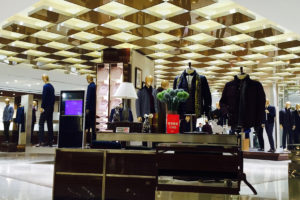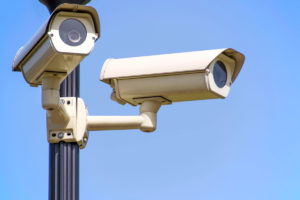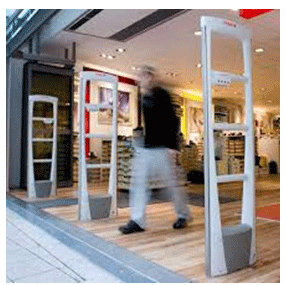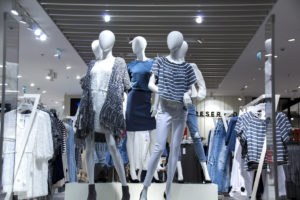 It is human nature, we have a way we do things, we get comfortable and someone comes along with a suggestion and we get defensive. We think to ourselves, “My way works, why change it?” When asked why we do something the way we do, we may resort to using the old, “Because we’ve always done it this way” excuse to answer an inquiry. On occasion we may not want to try something new because it involves new technology we may not be familiar with. I remember when (no laughing) Loss Prevention moved from recording on VHS tape recorders to digital recording. New technology does not come easy to me and I had to learn how to use it or get passed by. In the long run, it was a better method of storing video overall. We could search transactions more easily for suspected employee passing incidents or cash theft. We could narrow searching to specific times and we could create recording “zones”. Recording only activated when someone walked into the “zone” we were concerned with due to missing merchandise. Electronic Article Surveillance anti-theft devices became more prevalent with new and improved capabilities. Learning to trust the technology to prevent shoplifting and allow stores to take more merchandise out of lock-up cases and put them on store shelves for customer access was a difficult transition for an old school Loss Prevention Manager. In the long run these changes were for the better. We improved time management with digital recording and closed investigations faster. EAS freed up the time to unlock showcases and drove sales with increased customer access to merchandise.
It is human nature, we have a way we do things, we get comfortable and someone comes along with a suggestion and we get defensive. We think to ourselves, “My way works, why change it?” When asked why we do something the way we do, we may resort to using the old, “Because we’ve always done it this way” excuse to answer an inquiry. On occasion we may not want to try something new because it involves new technology we may not be familiar with. I remember when (no laughing) Loss Prevention moved from recording on VHS tape recorders to digital recording. New technology does not come easy to me and I had to learn how to use it or get passed by. In the long run, it was a better method of storing video overall. We could search transactions more easily for suspected employee passing incidents or cash theft. We could narrow searching to specific times and we could create recording “zones”. Recording only activated when someone walked into the “zone” we were concerned with due to missing merchandise. Electronic Article Surveillance anti-theft devices became more prevalent with new and improved capabilities. Learning to trust the technology to prevent shoplifting and allow stores to take more merchandise out of lock-up cases and put them on store shelves for customer access was a difficult transition for an old school Loss Prevention Manager. In the long run these changes were for the better. We improved time management with digital recording and closed investigations faster. EAS freed up the time to unlock showcases and drove sales with increased customer access to merchandise.
The truth is, often there is a better way to do things either because it is more cost efficient, it can save time or it is more accurate. One way to determine if there are areas for improvement for your inventory and receiving processes is to ask a trusted friend to go through and review how your store operates. The friend does not have to be an expert in receiving best practices, per se, but they should be good at evaluating how something is done and being able to ask, “Why?” and saying, “What if?” A friend will also have your trust and be able to be brutally honest with you about deficiencies in how you are doing something. You have to be prepared to take critiques and suggestions and not personalize them.
What are some things you may seek to have evaluated in regard to receiving or inventory practices?
- How frequently are vendors giving you credit on product that is not selling.
- Some vendors such as cosmetic and jewelry vendors come in with laptop bags, purses boxes, etc. Do you inspect these for hidden merchandise before they leave your building?
- Do you react to an EAS alarm for a vendor the same way you do for a shoplifter?
- How much space in a stockroom is a vendor taking up with their products and can it be reduced?
- How often is your store serviced by your vendors?
- Have your product delivery evaluated? Is the store processing the merchandise and getting it to the floor in a timely and efficient manner?
- Is product protected with EAS tags and anti-theft devices when it arrives to the store or after it is stocked on the sales floor?
- How do you have your stockroom organized and how easy is it to locate merchandise to get it to the sales floor?
- For inventory does your store count the merchandise and report it or do you bring in a professional inventory service?
- How do you prep your store for inventory, especially your stockroom areas? Do you keep your stockroom inventory-ready all year or do you scramble to make it “countable”?
- If you use a professional inventory service, do you still do a significant number of pre-counts or do you let the inventory company do what they are hired to do and can do better?
These are just a few suggestions that an evaluation of your procedures should include. The benefit to you may be that there are things that you can implement or change that will save payroll, increase productivity, improve efficiency and ultimately improve profitability.
 If you were asked what area of your store would present the most opportunity for employee theft and fraud, what would you answer? The checkout lanes where cashiers have access to the register, the ability to pass merchandise,
If you were asked what area of your store would present the most opportunity for employee theft and fraud, what would you answer? The checkout lanes where cashiers have access to the register, the ability to pass merchandise,
 drawer. IF someone reaches towards the drawer the register should be shut. Registers should be closed immediately following a transaction. If a cashier is sorting through the money or “straightening” they could be slipping money out and pocketing it or dropping money, then putting it in their pocket. Don’t “exchange” bills for patrons, there are some shoplifters who also engage in short changing and confusing cashiers and steal money using this method. Others will argue they did not get the right amount of change and start reaching in the till. If there is a dispute over change a manager needs to conduct a till audit with a partner, in the cash office. If there are enough registers in the store, limit one cashier to one register, when the cashier is done for the day, their money goes in their bag with a supervisor present and the supervisor drops it in the cash cart and rolls it to the cash office. Keep large bills under the till, if they are on top they are easy to see and easier for a grab and run. Consider purchasing locking till covers for registers that have money in them but are not currently in use. There are traveling shoplifting rings and till tap rings that have register keys and will open drawers if no one is paying attention. Till covers prevent someone from getting to the cash even if they open the drawer. Finally, when a register has too many large bills or excessive amounts of money, do a skim and take the excess to the cash office.
drawer. IF someone reaches towards the drawer the register should be shut. Registers should be closed immediately following a transaction. If a cashier is sorting through the money or “straightening” they could be slipping money out and pocketing it or dropping money, then putting it in their pocket. Don’t “exchange” bills for patrons, there are some shoplifters who also engage in short changing and confusing cashiers and steal money using this method. Others will argue they did not get the right amount of change and start reaching in the till. If there is a dispute over change a manager needs to conduct a till audit with a partner, in the cash office. If there are enough registers in the store, limit one cashier to one register, when the cashier is done for the day, their money goes in their bag with a supervisor present and the supervisor drops it in the cash cart and rolls it to the cash office. Keep large bills under the till, if they are on top they are easy to see and easier for a grab and run. Consider purchasing locking till covers for registers that have money in them but are not currently in use. There are traveling shoplifting rings and till tap rings that have register keys and will open drawers if no one is paying attention. Till covers prevent someone from getting to the cash even if they open the drawer. Finally, when a register has too many large bills or excessive amounts of money, do a skim and take the excess to the cash office.

 The busiest shopping season of the year is almost done.
The busiest shopping season of the year is almost done. Light-When someone is looking to do no good to your property, they feel more secure if it looks like no one is home. The key is to confuse them and make them feel unsure. Remember, most burglars are lazy. If they are not sure about your house, they will move on. So you should have at least two light timers (three is better) set up and running seven days a week. These should be in different areas of the home and should come on and off at different times. Use the random or security feature found on most timers. This will vary the on/off time every day just a little in case someone is watching the house for a pattern.
Light-When someone is looking to do no good to your property, they feel more secure if it looks like no one is home. The key is to confuse them and make them feel unsure. Remember, most burglars are lazy. If they are not sure about your house, they will move on. So you should have at least two light timers (three is better) set up and running seven days a week. These should be in different areas of the home and should come on and off at different times. Use the random or security feature found on most timers. This will vary the on/off time every day just a little in case someone is watching the house for a pattern.  Each year retailers take inventory of their merchandise, counting what they have in the store, reconciling that information against sales receipts, vendor credits and receipts and markdowns. Usually the result is some amount of shortage or merchandise shrink due to merchandise that cannot be accounted for and losses due to certain markdowns and damaged products. I have in rare instances seen overages, but those are usually the result of offsets from prior year shortages often attributed to paperwork errors. The store objective each year should be to improve upon the prior year inventory result. Certainly the best case would be to have zero dollar shortages every year, but that is not a realistic expectation. I try to explain to employees that if one package of gum were to be stolen during the year, you have incurred shortage. There are steps a store owner or manager can take to work towards that yearly improvement and shoot for a zero dollar shrinkage year.
Each year retailers take inventory of their merchandise, counting what they have in the store, reconciling that information against sales receipts, vendor credits and receipts and markdowns. Usually the result is some amount of shortage or merchandise shrink due to merchandise that cannot be accounted for and losses due to certain markdowns and damaged products. I have in rare instances seen overages, but those are usually the result of offsets from prior year shortages often attributed to paperwork errors. The store objective each year should be to improve upon the prior year inventory result. Certainly the best case would be to have zero dollar shortages every year, but that is not a realistic expectation. I try to explain to employees that if one package of gum were to be stolen during the year, you have incurred shortage. There are steps a store owner or manager can take to work towards that yearly improvement and shoot for a zero dollar shrinkage year. After a long and contested election cycle, a new president will be inaugurated and with this result, some experts are predicting the economy will begin to improve significantly.
After a long and contested election cycle, a new president will be inaugurated and with this result, some experts are predicting the economy will begin to improve significantly. customer transaction.
customer transaction.